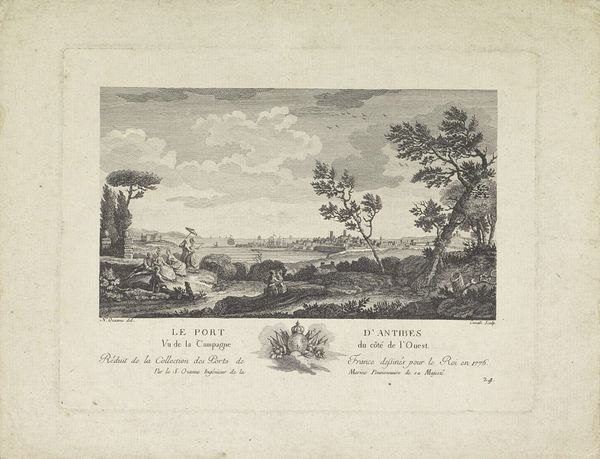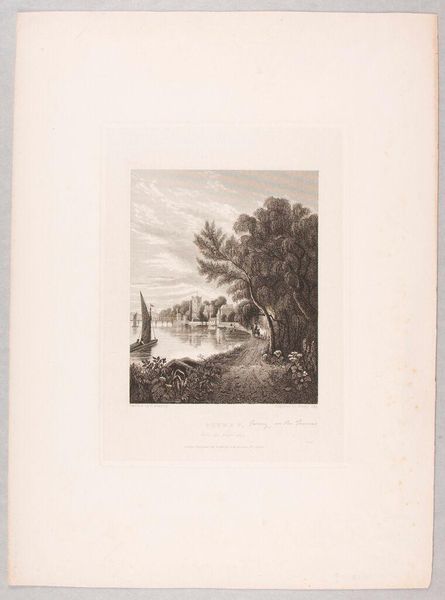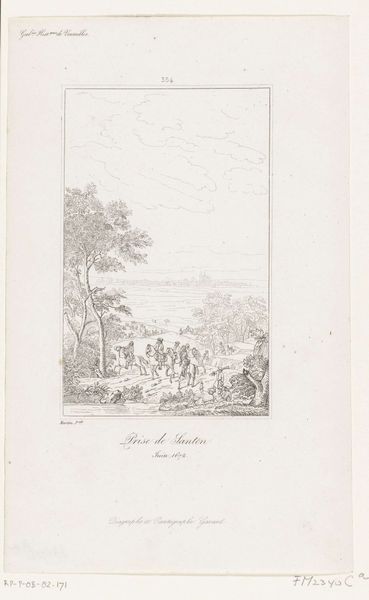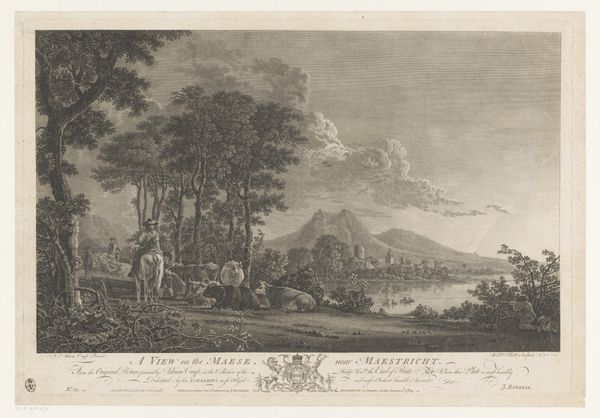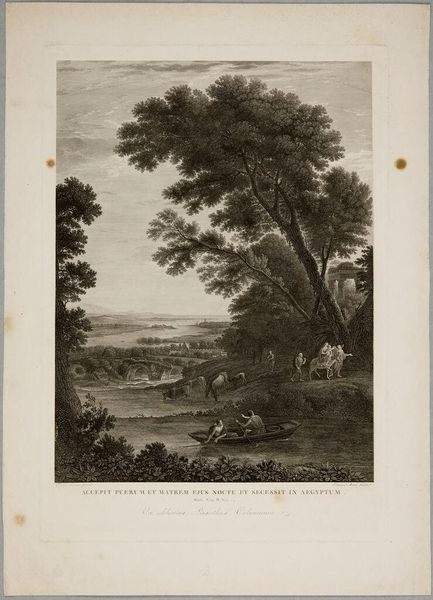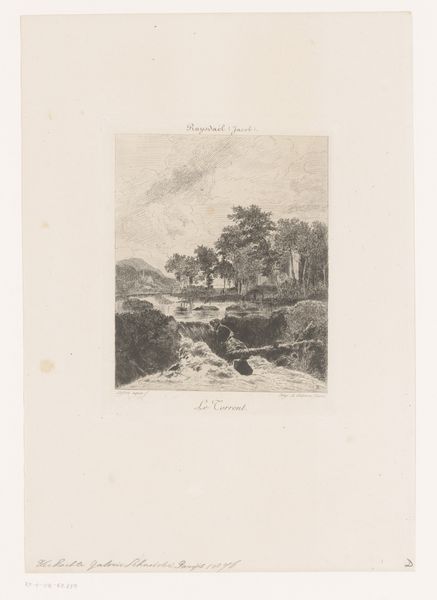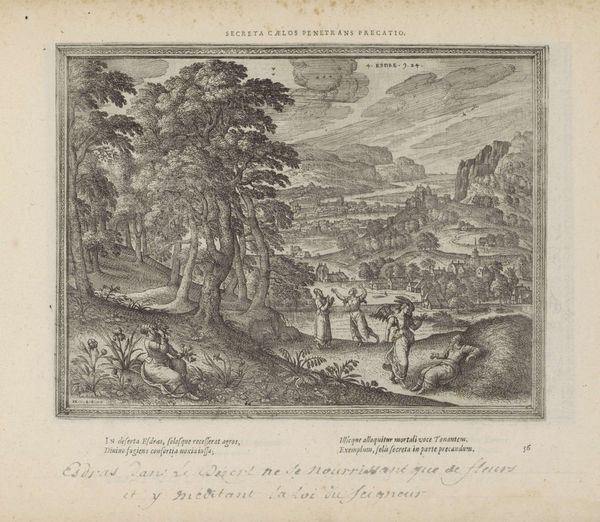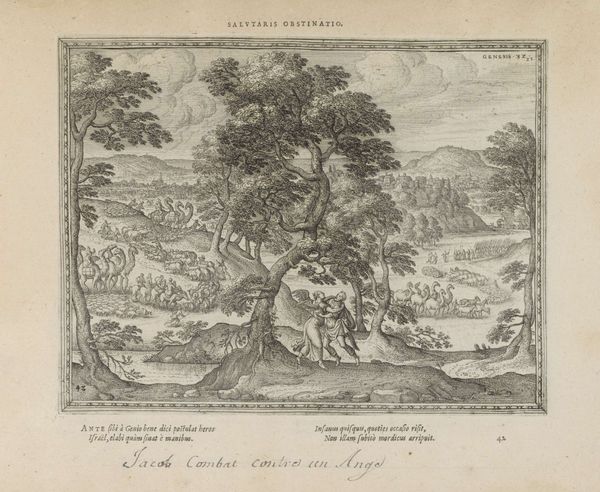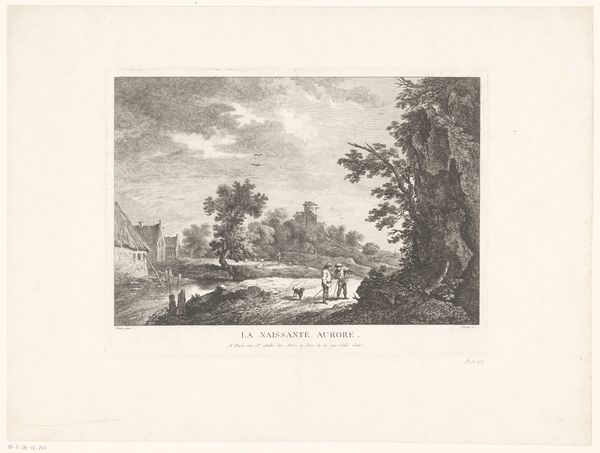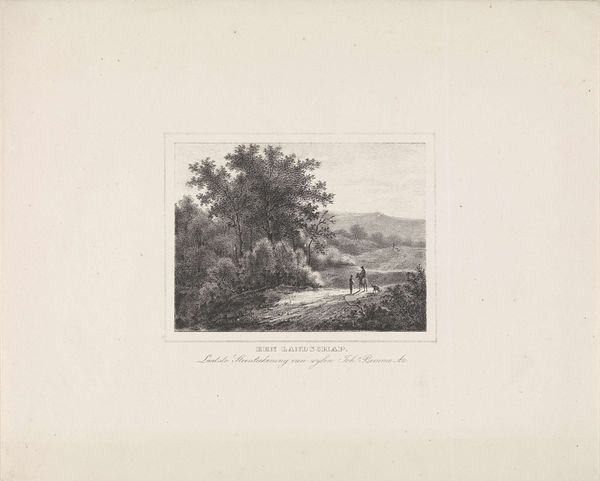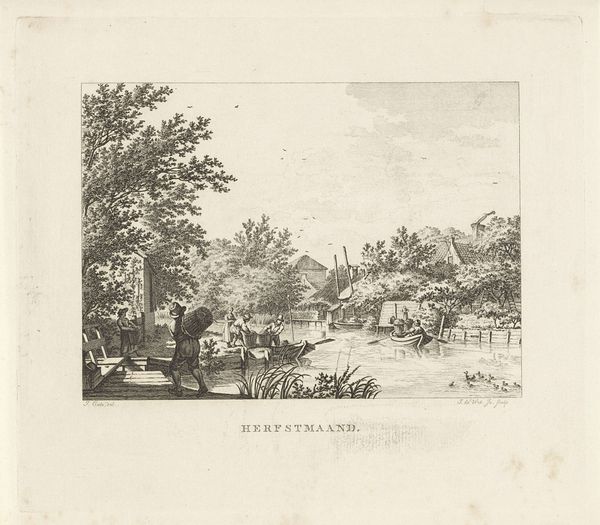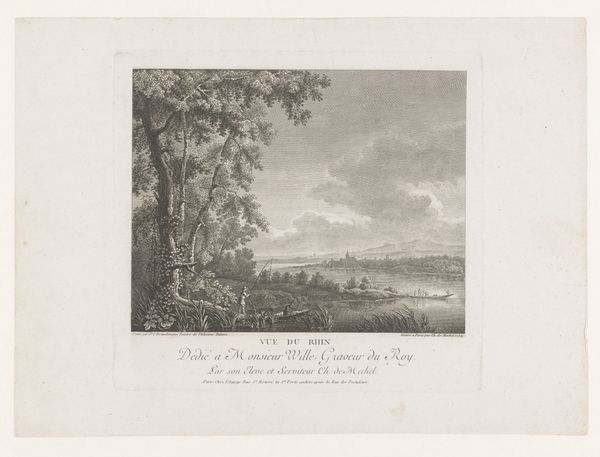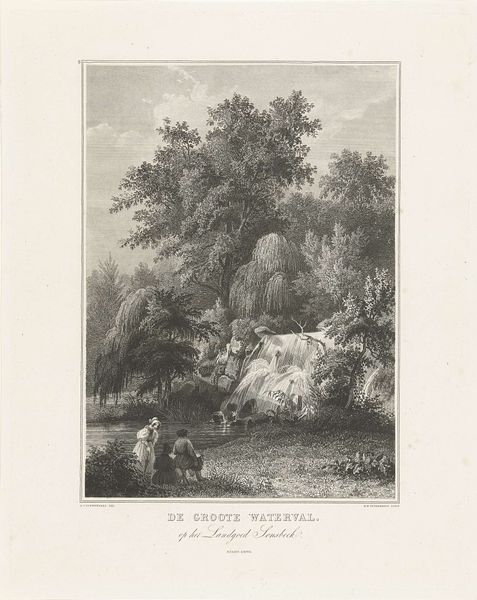
print, engraving
# print
#
old engraving style
#
hand drawn type
#
landscape
#
romanticism
#
engraving
#
sea
Dimensions: height 228 mm, width 140 mm
Copyright: Rijks Museum: Open Domain
Curator: Here we have Daniël Veelwaard's 1815 engraving, "Gezicht op zee-inham bij King Georges Island." It depicts a scene from Matthew Flinders' voyage, specifically a view of King Georges Island. Editor: My first thought is that this feels incredibly distant. It’s almost like looking at a stage set, beautifully crafted but lacking a certain vitality, especially considering it depicts a landscape. Curator: The "distant" feeling may stem from its purpose. This wasn’t simply a landscape; it was part of a larger publication detailing Flinders' explorations. These images served to document and communicate findings, aligning with the era’s scientific ambitions. This print accompanied a written account of his travels to a place the print describes in antiquated Dutch as "Groote Zuidland, anders Nieuw Holland," now Australia, describing Flinders' journey and even a shipwreck that involved the French! Editor: It’s interesting you bring up the documentary function, because to a modern eye, the landscape itself looks strangely staged. The single palm tree in the composition looks a bit too perfect, and the light seems artificially arranged to highlight that lone figure in the bushes. Curator: Romanticism was in full swing, remember. This piece attempts to combine observation with emotional impact. Note how the engraver highlights the small figures near the shore in a bright glade against the dark flora of the tropics. This highlights the narrative that men—Europeans in particular—were dominating the land. Editor: Precisely! This goes beyond mere documentation; it subtly reinforces colonial narratives of discovery and ownership. Who occupied this land before these 'discoverers?' Veelwaard subtly, or not so subtly, promotes the political ideology of colonial exploration and dominance through the use of such images as scientific documents. The way the foreground is crowded also seems symbolic of an active "claiming." Curator: The artist had likely never visited this place. It reminds us how such images played a key role in shaping European perceptions and understandings of distant lands and people. It reinforces an inaccurate rendering, viewed through a distinctly Western lens, becoming, problematically, truth in the process. Editor: Understanding the socio-political context allows us to view "Gezicht op zee-inham bij King Georges Island" not just as a landscape, but as a loaded document shaped by specific ideological interests. Curator: By remembering to always consider the social climate and intentions behind artwork, even an unremarkable engraving can open up surprisingly rich areas for study and debate. Editor: Indeed. It is our duty to challenge prevailing views through cultural critique.
Comments
No comments
Be the first to comment and join the conversation on the ultimate creative platform.
